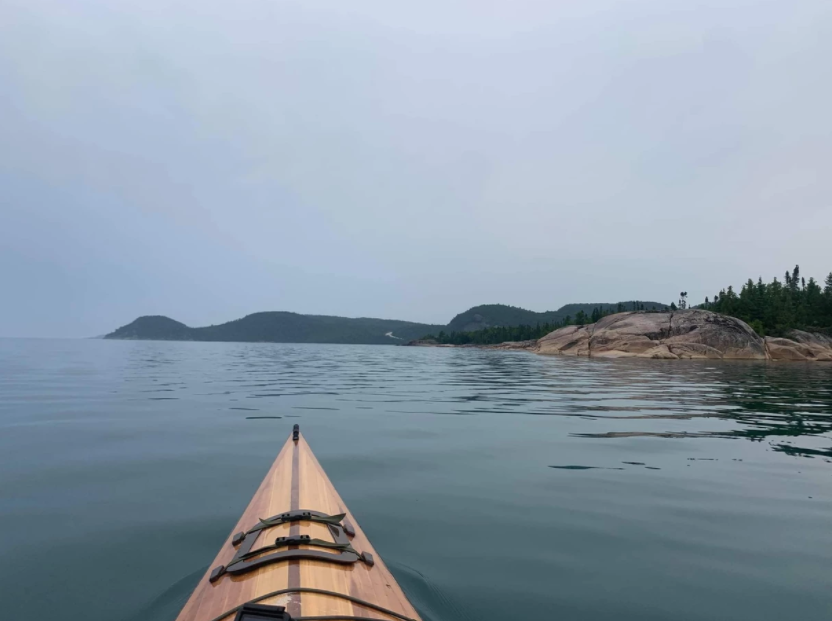This summer, Saultite Peter Greve and his father Rob embarked on a kayaking trip to remember.
The 26-year-old nursing student and the Sault Ste. Marie Fire Services platoon chief kayaked 300 kilometres of Lake Superior in August to raise awareness for the Lake Superior Watershed Conservancy (LSWC). They made it all the way to the Michipicoten River.
“It’s been a tough year for non-profit organizations, so I thought it would be a good opportunity to combine my love for paddling with fundraising that will help support LSWC in their mission,” Greve said in an earlier story for SooToday.
Greve is a former employee of LWSC, and helped to develop a canoe program called Canoes for Conservation. “We’d run interpretive tours in a 36-foot long canoe. So it was a good way to get people out safely as a group and talk about history, culture, and environmental issues. It was a lot of fun,” he said.
The Lake Superior Watershed Conservancy aims to protect environmentally sensitive areas along the coast. Their mission is to support the vitality of the Lake Superior Watershed through conservation, education and active participation.
“We actually paddled by one of the preserves, the Gargantua Island preserves. It was pretty neat to be able to see what LSWC does over Lake Superior,” Greve said.
Cape Gargantua is part of Batchewana First Nation's unceded traditional territory. It is known to them as Nanabozhung, the birthplace of Nanabijou and is spiritually significant to the community.
Some of the most spectacular places along the coast are also culturally significant to the Michipicoten First Nation and other Anishinaabe communities in the area added Greve.
For the Greves, sharing this experience was definitely something that brought them closer.
“We built the kayak that I paddled together over the past year,” he said. “I learned a lot of different skills from my dad in terms of woodworking, and I got to share a little bit in terms of paddling with him. A lot of the places we went to, he hadn’t visited yet, so that was pretty special.”
Greve says there were many motivations behind deciding to go on this trip.
“One of the main reasons was my love for Lake Superior. I’m really passionate about the lake, I feel connected to it. I want to understand it more. I also got to meet people along the shoreline. Every day we met with at least one or two people and I got to interview them, so I learned a lot from people along the way,” he said.
“When you’re on a trip or vacation, you have this novel perspective of the place if it’s somewhere you haven’t been before. I wanted to take that perspective and experience that somewhere closer to home,” he added.
In a blog post he wrote for the LWSC website reflecting on his journey, Greve shared that even after having completed the trip, he “didn’t feel like he completed a goal”.
“In one sense, I’ve paddled 300 km and observed the entire shoreline. However, as I reflected, I realized my real goal was to learn about and connect all the places I know and love on the Lake; to learn from observation, but also through reading and talking with people along the way. Then to share what I learn,” he wrote.
Some of the things he learned during the trip were to always make sure your belongings are waterproof, cobblestone beaches are the best for napping, and if you’re debating taking a trip, just go with your gut and go for it. “The best time is now,” he wrote.
The Greves have managed to raise over $2,500 in donations for LSWC so far.
“Thank you to everyone who donated, followed along, shared, and helped promote a healthier Lake Superior,” he said.
